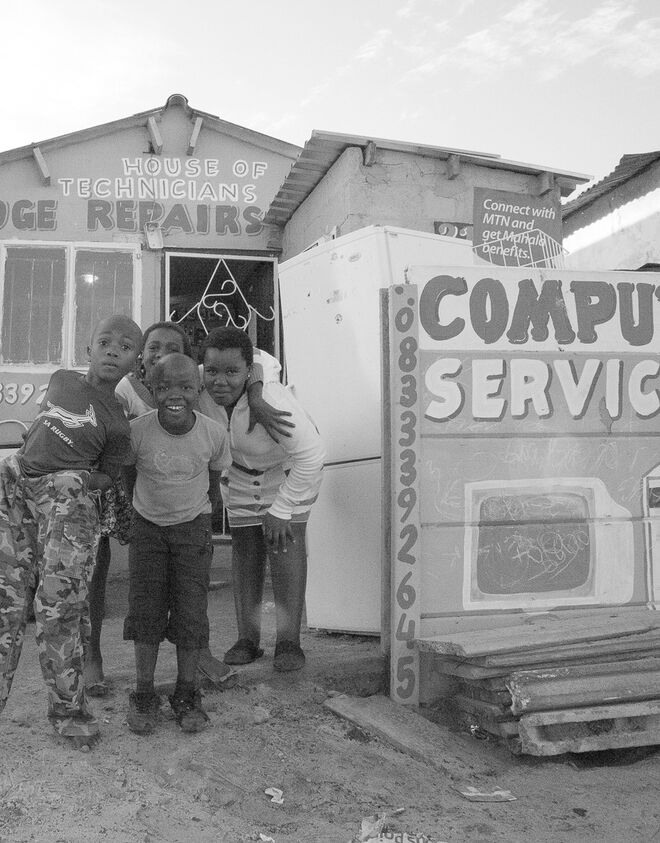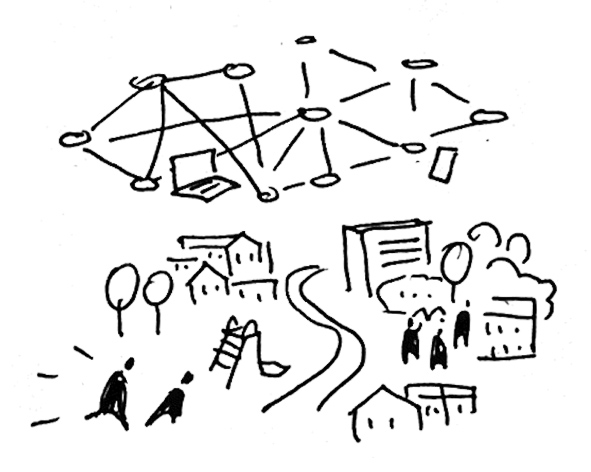14.3. Data With The People
Aus Pattern Language Wiki
(Weitergeleitet von .../Data With The People)
In Slum Upgrade and Urban Regeneration, one of the most important capacities is the ability of local residents to generate and manage their own data and its technology.
Problem-statement: Many people speak about the importance of data as a means to provide better services to residents of informal settlements. Too few people speak about the importance of data as a means to empower those residents.
Discussion: There is a basic distinction in all urban development work between “doing for” and “doing with.” In the former approach, often government services provide services for residents in a top-down fashion In the latter, residents are given the power to do more, through partnerships and through technological resources.
This is certainly true when it comes to data technology. Beyond the need for governments to measure populations and services needed, there is a basic need for residents to have data capabilities in their own hands — for example, to be identifiable on email and the Web, to have a record of their physical address, and to have access to Web-based resources.¹
Therefore:
Build the network of data resources within each neighborhood. Provide technology, training and support, especially to children.
Use data resources to assist with Incremental Self-Build. Provide support at the Neighborhood Planning Center…
¹ See e.g. Hachmann, S., Arsanjani, J. J., & Vaz, E. (2018). Spatial data for slum upgrading: Volunteered Geographic Information and the role of citizen science. Habitat International, 72, 18-26.
Cover photo: Vgrigas via Wikimedia Commons.
Mehaffy, M. et al. (2020). DATA WITH THE PEOPLE (pattern). In A New Pattern Language for Growing Regions. The Dalles: Sustasis Press. Available at https://pattern-language.wiki/.../Data_With_The_People
SECTION I:
PATTERNS OF SCALE
1. REGIONAL PATTERNS
Define the large-scale spatial organization…
1.4. 400M THROUGH STREET NETWORK
2. URBAN PATTERNS
Establish essential urban characteristics…
3. STREET PATTERNS
Identify and allocate street types…
4. NEIGHBORHOOD PATTERNS
Define neighborhood-scale elements…
5. SPECIAL USE PATTERNS
Integrate unique urban elements with care…
6. PUBLIC SPACE PATTERNS
Establish the character of the crucial public realm…
7. BLOCK AND PLOT PATTERNS
Lay out the detailed structure of property lines…
8. STREETSCAPE PATTERNS
Configure the street as a welcoming place…
9. BUILDING PATTERNS
Lay out appropriate urban buildings…
10. BUILDING EDGE PATTERNS
Create interior and exterior connectivity…
10.1. INDOOR-OUTDOOR AMBIGUITY
SECTION II:
PATTERNS OF MULTIPLE SCALE
11. GEOMETRIC PATTERNS
Build in coherent geometries at all scales…
11.2. SMALL GROUPS OF ELEMENTS
12. AFFORDANCE PATTERNS
Build in user capacity to shape the environment…
13. RETROFIT PATTERNS
Revitalize and improve existing urban assets …
14. INFORMAL GROWTH PATTERNS
Accommodate “bottom-up” urban growth…
15. CONSTRUCTION PATTERNS
Use the building process to enrich the result…
SECTION III:
PATTERNS OF PROCESS
16. IMPLEMENTATION TOOL PATTERNS
Use tools to achieve successful results…
16.2. ENTITLEMENT STREAMLINING
16.3. NEIGHBORHOOD PLANNING CENTER
17. PROJECT ECONOMICS PATTERNS
Create flows of money that support urban quality…
17.4. ECONOMIES OF PLACE AND DIFFERENTIATION
18. PLACE GOVERNANCE PATTERNS
Processes for making and managing places…
18.3. PUBLIC-PRIVATE PLACE MANAGEMENT
19. AFFORDABILITY PATTERNS
Build in affordability for all incomes…
19.1. INTEGRATED AFFORDABILITY
20. NEW TECHNOLOGY PATTERNS
Integrate new systems without damaging old ones…
20.2. RESPONSIVE TRANSPORTATION NETWORK COMPANY

